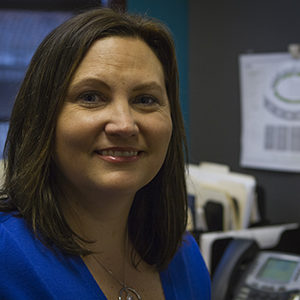On May 29, Delta Air Lines debuted new uniforms in airports, on planes, and under wing. I was flying that day and did a double take when I saw the agent wearing “Passport Plum” instead of navy. Of course, as an avid traveler AND fashionista, I knew that past airline uniforms were designed by famous designers. So, I immediately googled for more information. After answering the designer question (Zac Posen and Lands’ End), I started researching how Delta engaged their teams in this. At Root, we work with several leading retail, hotel, and restaurant companies, so uniform changes are nothing new in our world. But what makes a launch stand out is how employees are engaged in the change. Because change, even when it “just” involves clothing, is hard.
People want to look and feel good on the job, especially in uniform, because often, uniforms don’t do either. Employees want a voice in what they wear. Even if they can’t make the final decision, having input and a choice goes a long way in engagement. User-centered design can make or break how well your new uniforms – or any type of change for that matter – are received by your people. When it comes to uniforms, things are especially personal, making it even more crucial to get buy-in. Some employees I’ve talked to say they are embarrassed to wear their uniforms on their way to and from work. Others say their uniforms make it hard to do their job effectively because of the fit. How are you going to retain your best employees when you are making it physically difficult or embarrassing to do their jobs?
Another Success Story from the Sky – User-Centered Design Uniforms
Here’s what Delta did to engage their employees in the uniform change, which is the epitome of user-centered design:
“The uniform collection reflects employee input at each step of the design process. For three months, 1,000 Delta people in diverse roles around the globe tested the uniforms to ensure the final designs would support a variety of job functions, climates, and body types. The Zac Posen and Lands’ End design teams conducted hundreds of focus groups, job-shadowed employees, and gathered recommendations from more than 30,000 surveys. All of this and more feedback led to more than 170 changes.”
Delta didn’t just involve their people in the design process, they went one step further and engaged customers in the journey too. They had press releases, created a multi-episode video series explaining the process, and incorporated the story of uniforms, past and present, in their latest on-board safety video. When I traveled on May 29, employees and crew were talking about the uniforms with customers, answering questions, and sharing their thoughts.
Another great example is United Airlines, which engaged with Carhartt for redesigning the airline’s below-the-wing employee uniform. United recognized that many of their employees preferred Carhartt for durable workwear and chose the iconic company as their partner. They listen to their employees and are actively engaging them in the multi-year journey to get the uniforms right.
In contrast, you can find hundreds of articles, Pinterest boards, and even online petitions about companies that have gotten the uniform decision wrong.
Airlines have been doing uniform changes well for years – engaging well-known designers, focusing on fit and function in addition to fashion, offering options so employees can customize their uniform, and designing for a variety of body types. They have been engaging employees throughout the journey. They are also actively engaging customers and being transparent about the decisions they made and the process they used. While I believe it is possible to replicate, I don’t see the same transparency in other industries.
Applying User-Centered Change to Operations Too
This user-centered change approach can be applied to many operational changes that transportation, retail, hotel, and restaurant companies are embarking on. It really is as simple as making your people feel a part of your plan. Ask for opinions. Let people test a new IT program or process before it’s rolled out. If you strive to gain employee input and partnership at every stage of the journey, you’ll be on your way to enabling a smooth change process.
What operational changes do you think present the most opportunity to change the way we engage employees? Do you have a tip on how you’ve incorporated user-centered change in your organization?






